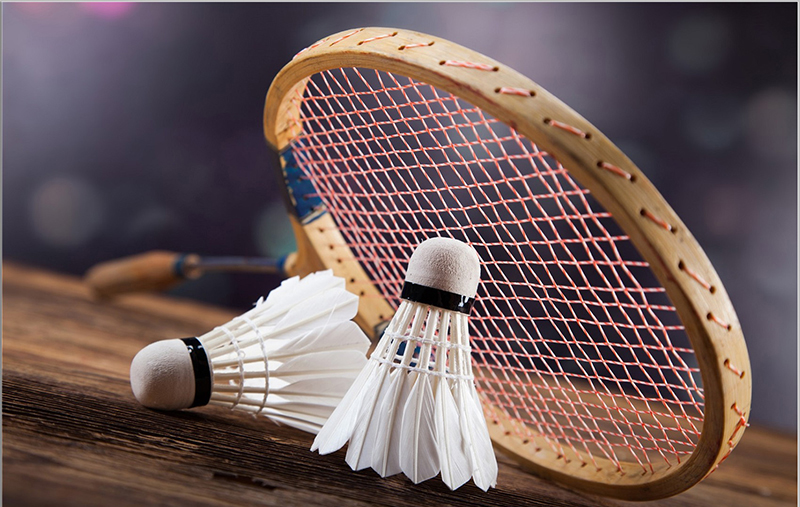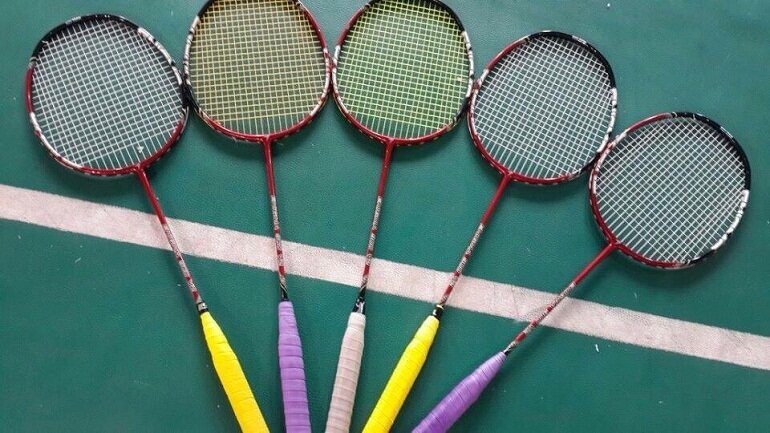How to properly wrap a badminton racket handle?
02 Mar, 2023How to properly wrap a badminton racket handle?
28 Nov, 2022 - Rackets
1. What criteria should you choose a badminton racket?
1.1. Choose the frame shape of the badminton racket
The first factor to answer the question of which badminton racket to choose is the racket frame. Each playstyle will suit different racquet styles. Such as:
Square Isometric Frame: Helps to increase the area of the return area on the racket, creating the maximum sweet point on the racket.
The traditional oval OVal frame has a narrower return area, but will optimize the return power

1.2. Price of badminton racket
High-quality imitation racquets will have a popular price of 400 to 600,000 VND. With reputable, quality and famous brands, badminton rackets are more expensive, usually over 800,000 VND. Some high-end racquets often cost over 2 million VND. Depending on the string material, frame type and production technology, the price of racquets will vary.
1.3. Weight of racket
The U symbol on the racket represents the weight, the larger the U value, the smaller the racket weight will be. Hand strength will determine how to choose a racket as follows:
The weight from 2U is equivalent to 90 to 94.9 grams, suitable for men's racquets with strong arm strength.
In the weight from 3U, equivalent to 85 to 89.9 grams, it is a moderate weight, mainly for men with strong, strong hand.
The 4U weight is equivalent to 80 to 84.9 grams, which is quite light, suitable for amateur female tennis players.
The 5U weight is equivalent to 75 to 79.9 grams, suitable for beginners, female players with weak hand strength.
Weight F equivalent from 70 to 74.9 grams super light, suitable for children and teenagers.

1.4. Racket handle size, badminton racket length
The letter G denotes the size of the racquet handle, the larger the G value, the smaller the size. Measure the length from the tip of your ring finger to the crease at the bottom of your palm to get the grip circumference. From there, you will choose the right size racquet handle. Besides, you can also hold the racket and measure the distance. If the distance from the tip of the ring finger to the base of the thumb is exactly 1 finger, then you have chosen a racket with the appropriate handle size.
Depending on your arm length, hand size, and playing style, you will choose the right racket length. Ideally, you should feel with your hands and see with the naked eye to choose the racket length.
1.5. Body stiffness
There are two types of racquets, hard and flexible, with their own advantages and disadvantages. Determine your skills, tactics, hitting power and strengths so that you can choose the right hardness.
Flexible body with great flexibility and flex, suitable for beginners, amateurs, seniors, defensive players.
Hard rod rackets need players with good skills, strong physical strength, strong arms, handling strong shuttlecocks with fast and professional support speed. This racket has high precision, no vibration, suitable for professional racquets and players with a strong attack style.
1.6. Badminton racket tension and balance
Choosing a good badminton racket depends on the tension of the net and the balance of the badminton racket. The tension of the net must match the wrist strength and fitness of the player. Those with strong hitting power will be suitable for high tension racquets and vice versa.
Using a racket with great tension combined with good hitting power will help players return the shuttle with a high level, making it difficult for the opponent. Players using racquets with lower tension will receive more support in terms of force, slower return speed. To play badminton most effectively, you need to pay attention to your own ability to choose the right racket tension.
The balance of the racquet is determined when you choose to use an all-around offensive, defensive or defensive racquet. These parameters will be written on the shaft of the racquet, so you need to pay attention to this detail.
1.7. Test your racquet's vibration, accuracy and power
To check the vibration level and accuracy of the racquet, place the racquet on the table surface, keep the grip firmly, and gently press the head of the racquet. If the racquet does not shake horizontally or the vibration time is less than 10 seconds then it is a good racquet with low vibration.
The accuracy check of the racket must be carried out during hitting the shuttlecock. When you make a strong swing with a high-precision racket, the shuttle will fly accurately, with low twist. In case you use strong force but the shuttle is deformed, twisted, the trajectory of the ball is changed, it is a low-precision racket.
The power of badminton rackets is divided into 5 levels as follows:
Grip support made of Graphite module: This is the type with the highest level of support with a design from titanium material, nanostructure, wide frame with muscle.
The rolling force is made of Graphite module, but the material is a mixture of corrugated carbon and titanium, the nanostructure is a high support type.
The rolling support made of Graphite module is the normal type of power booster.
Graphite rolling aids are usually low-powered.
Badminton rackets with steel shafts are of the non-powered type.